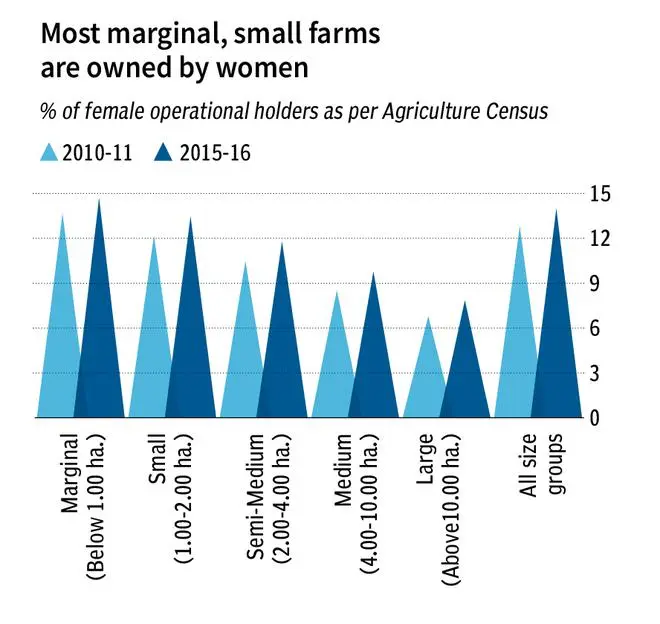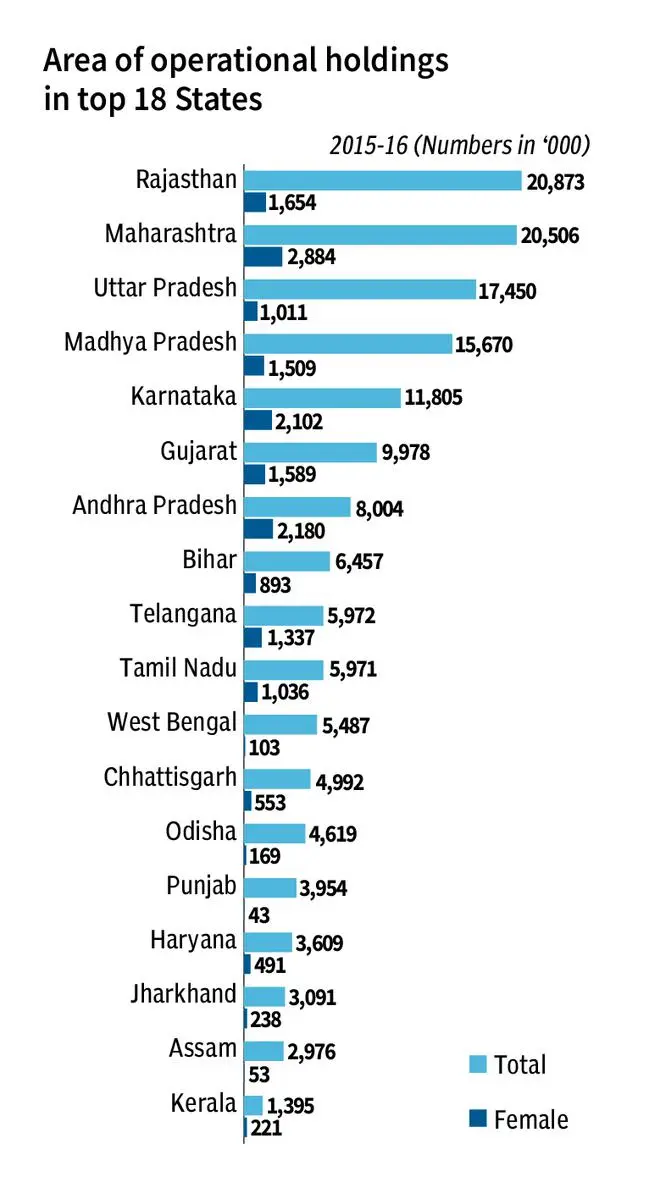The agriculture sector employs 80 per cent of all economically active women; they comprise 33 per cent of the agricultural labour force and 48 per cent of self-employed farmers. The Indian Council of Agricultural Research (ICAR) research revealed that the participation of women is 75 per cent in the production of major crops, 79 per cent in horticulture, 51 per cent in post-harvest work and 95 per cent in animal husbandry and fisheries.
The union government has admitted that agriculture, the largest production endeavour in India which contributes substantially to the GDP, is increasingly becoming a female activity.
Recognizing the critical role of women in agriculture, the Ministry of Agriculture and Farmers Welfare declared 15 October of every year as Women Farmer’s Day, but gender-specific intervention to give women their entitlement still remains on paper.
The latest All India Report of Agriculture Census (2015-16) shows that the total number of operational holdings in the country increased from 138.35 million in 2010-11 to 146.45 million in 2015-16, showing an increase of 5.86 per cent. Male operational holdings (excluding institutional) constituted 86.0 per cent while female holdings were 14.0 per cent in 2015-16 against 87.2 per cent and 12.8 per cent respectively in 2010-11. This data indicates the rising participation of females in the management and/or operation of agricultural holdings in the country.



Data shows that the percentage share of female operational holders has increased from 12.79 per cent in 2010-11 to 13.96 per cent in 2015-16 with the corresponding figures of 10.36 per cent and 11.72 per cent in the operated area.
But the data doesn’t reflect the ground reality when it is compared to women’s participation in agriculture, say women farmers.
Women in small and marginal farming
“Men are into farming when there is sufficient land, irrigation and availability of credit. Women are into farming when the situation is exactly the opposite. Small and marginal farming is on the shoulders of women as men migrate to cities in search of jobs leaving behind families” says Subhadra Bahirwal, a farmer from Beed in Maharashtra.
The data reveals that in 2015-16, participation of female operational holders was highest under the marginal category (72 per cent) followed by small (17 per cent) and semi-medium (8.1 per cent). This is a significant percentage considering that about 86 per cent of farmers in India are small and marginal with average land holdings being less than 1.1 hectares.
The average operated area per holding in ‘all size classes’ decreased in general in 2015-16 as compared to 2010-11. The average size of operational holdings in the Agriculture Census 2015-16 was 1.08 hectares against 1.15 hectares in 2010-11. Male and female operational holdings in 2015-16 were 1.10 hectares and 0.90 hectares against 1.18 hectares and 0.93 hectares in 2010-11 respectively.
State-wise breakdown
Out of the total 20.44 million female operational holdings, Andhra Pradesh accounted for the highest proportion of 12.6 per cent followed by Maharashtra (11.6 per cent), Bihar (11.2 per cent), Uttar Pradesh (8.9 per cent), Karnataka and Kerala (8.5 per cent each), Tamil Nadu (7.6 per cent), Telangana (6.7 per cent), Madhya Pradesh (5.8 per cent), Gujarat (4.3 per cent), Rajasthan (3.8 per cent) and Chhattisgarh (2.7 per cent). These 12 States together constituted over 92.0 per cent of the total number of operational holdings belonging to females in the country in 2015-16.
“The agriculture household male members always recognize themselves as farmers in the government records. But women in these households are not recognized and recorded as farmers. Also, land ownership mostly remains with men and even if they don’t work on farms, they identify themselves as farmers” says Chatura Kasbe, a farmer.





Comments
Comments have to be in English, and in full sentences. They cannot be abusive or personal. Please abide by our community guidelines for posting your comments.
We have migrated to a new commenting platform. If you are already a registered user of TheHindu Businessline and logged in, you may continue to engage with our articles. If you do not have an account please register and login to post comments. Users can access their older comments by logging into their accounts on Vuukle.